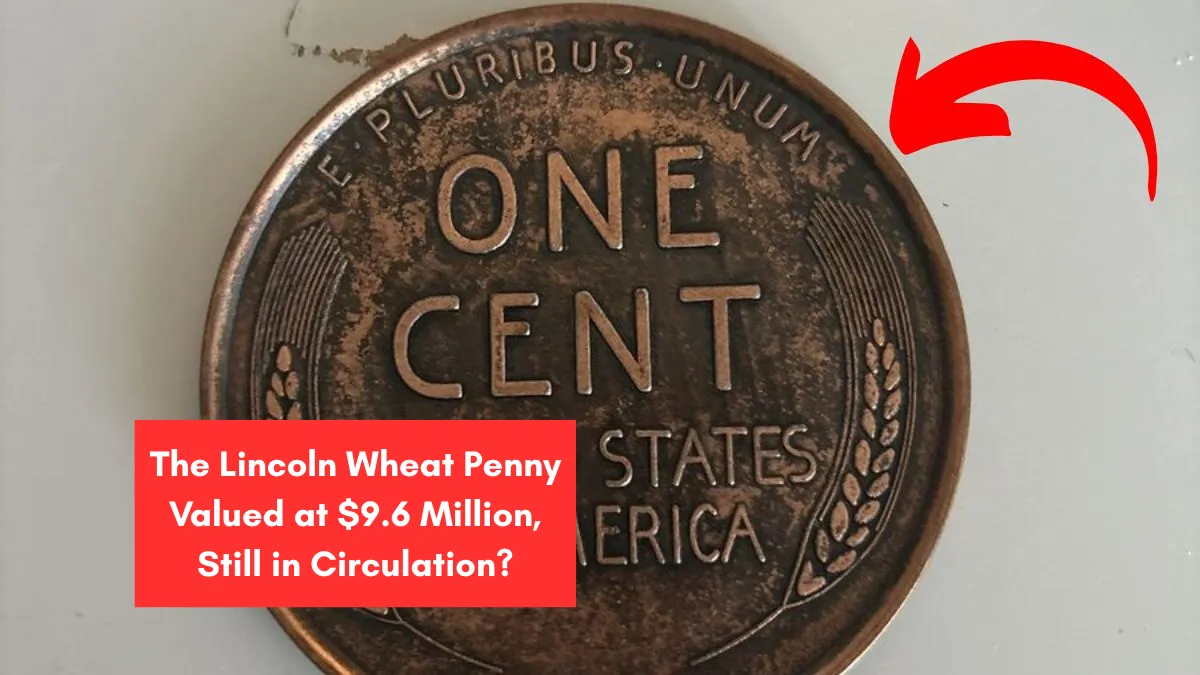What if the penny rattling around in your change jar turned out to be worth $9.6 million? It might sound unbelievable, but in the fascinating world of numismatics (coin collecting), one coin’s value can skyrocket thanks to rarity, condition, or even a minting mistake. Among the most coveted coins in American history is the Lincoln Wheat Penny—and some rare versions are rumored to be worth millions. Could one still be circulating today?
Let’s uncover the story behind this legendary penny and what makes it potentially worth $9.6 million.
What Is the Lincoln Wheat Penny?
The Lincoln Wheat Penny, minted from 1909 to 1958, is one of the most iconic U.S. coins. Designed by Victor D. Brenner, the coin features President Abraham Lincoln on the front and two wheat stalks on the back—symbolizing America’s agricultural roots.
While billions were produced over nearly 50 years, a few ultra-rare examples are valued in the millions, including the one rumored to be worth $9.6 million.
Why Would a Penny Be Worth $9.6 Million?
For a one-cent coin to be worth such an astounding amount, it must meet very specific and rare conditions. The $9.6 million figure likely stems from one of the following exceptional factors:
1. Ultra-Rare Mint Errors
The most valuable Lincoln Wheat Pennies are often the result of minting errors:
- 1943 Bronze Penny – Most 1943 pennies were made from zinc-coated steel due to WWII copper shortages. However, a few were mistakenly struck in bronze. Only a handful exist, and one sold for over $1 million. In top condition, it could be worth much more.
- 1944 Steel Penny – A reversal of the 1943 error, these pennies were mistakenly struck in steel when copper returned. Fewer than 30 are known to exist.
2. Unique Off-Metal Strikes
Some pennies were accidentally struck on foreign coin blanks or other denominations. These “wrong planchet” errors are extremely scarce and can fetch seven-figure sums.
3. First-Year Rarities or Experimental Strikes
Coins like the 1909-S VDB, the first year of issue with a low mintage of just 484,000, are already valuable. A perfect MS-68 grade version could potentially reach multi-million-dollar territory at auction.
Could the $9.6 Million Penny Still Be Out There?
Yes—it’s entirely possible. Some of the most valuable coins in U.S. history have been discovered in:
- Pocket change
- Garage sales
- Inherited collections
- Piggy banks and coin jars
Because so few people examine their coins closely, it’s plausible that one of these ultra-rare Lincoln Wheat Pennies is still circulating—or sitting in a box somewhere, forgotten.
How to Identify a Valuable Lincoln Wheat Penny
Here are key things to look for:
| Year | Mint Mark | Value Clue |
|---|---|---|
| 1909-S VDB | San Francisco | First edition, rare initials |
| 1914-D | Denver | Low mintage, high demand |
| 1922 No D | Denver | Mint mark missing in error |
| 1943 Bronze | No mint mark, D, or S | Should be steel, not bronze |
| 1944 Steel | No mint mark, D, or S | Should be copper, not steel |
Quick Tests:
- Magnet Test: Steel coins will stick; copper and bronze will not.
- Weight Check: Copper pennies weigh about 3.11 grams, while steel ones are lighter at 2.7 grams.
- Visual Inspection: Look for off-center strikes, unusual coloring, or missing details.
What To Do If You Think You Have a Rare Penny
- Don’t Clean It – Even gentle cleaning can ruin the value.
- Research Carefully – Compare your coin to verified examples.
- Get It Graded – Services like PCGS or NGC can authenticate and rate its condition.
- Consult a Coin Expert – A certified numismatist can provide accurate estimates.
- Secure It – If your penny could be worth a fortune, store it properly and consider insurance.
Record-Breaking Penny Sales
These historic sales prove just how valuable a “worthless” penny can be:
- 1943-D Bronze Penny – Sold for $1.7 million in 2010.
- 1958 Doubled Die Penny – Fewer than five known; can reach over $200,000.
- 1909-S VDB in MS-68 – Estimated value $100,000+, but a near-perfect specimen could push over $1 million in a heated auction.
If a previously unknown error coin or a prototype strike surfaces in mint condition, it could very well become the $9.6 million penny the world is waiting for.
Final Thoughts: Check Your Change!
The idea of a $9.6 million Lincoln Wheat Penny may seem unbelievable, but history shows that rare coins can and do sell for staggering sums. One of these priceless coins could be hiding in plain sight—on a countertop, in a piggy bank, or deep in a forgotten drawer.

